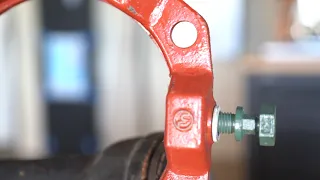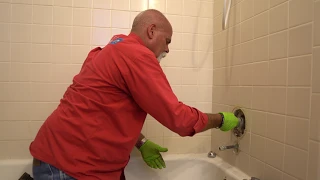It’s not just about the sheer numbers but the journey that got him there—from early, awkward uploads filmed on a laptop, to wildly popular reactions to outrageous “plumbing hacks.” This post revisits some of Roger’s standout videos, discussing what made them hits (or misses), what they taught the team about YouTube, and how they helped redefine online plumbing content. If you’ve ever been curious about the behind-the-scenes of a channel that teaches and entertains on all things plumbing, read on.
Chasing the First Viewers: Early Days on YouTube
Learning on the Job
Before hitting 100 million views, the channel consisted of low-lit, single-camera videos shot on a laptop via Google Hangouts. Roger had a simple aim: educate homeowners and small businesses about plumbing repairs. However, as he confesses, those early uploads had questionable camera angles, uneven lighting, and shaky audio. One had black bars on the sides, another was so dim it looked like a crypt. But, at the time, the priority was to get content out there—imperfect or not.
Selling the Plumbing Company vs. Educating the Audience
Originally, Roger created videos to promote his business, Texas Green Plumbing, hoping to attract more calls. The channel featured straightforward titles like “What Plumbing Can I Do Myself?” or “What to Do in a Plumbing Emergency.” Each video ended with calls to action, the company phone number, and the website plastered in the background. But something was missing. Numbers stagnated because homeowners craved practical tips, not a sales pitch. Soon, Roger realized that providing genuine solutions was far more valuable than repeating “Call us!” on camera.
Finding a Voice: Early Attempts That Stuck
Why Plumbers Hate Drano
One of Roger’s first “hit” topics was explaining why chemical drain cleaners are a plumber’s worst nightmare. Filmed with a basic setup and an old-school thumbnail design, the video still resonated because it filled a knowledge gap for many. Roger broke down the downsides of Drano, from pipe corrosion to partial clogs. Although the production quality was rough, its straightforward message helped viewers save money and avoid damage.
Fixing a Running Toilet
Another turning point was a simple tutorial titled “How to Fix a Running Toilet—Guaranteed.” Ironically, the video was a quick, no-frills shoot that Roger’s videographer deemed “the worst we’ve ever done.” And yet, it skyrocketed to one of the channel’s highest-performing tutorials, edging near 5 million views. The moral? Useful, concise solutions often trump fancy editing—especially if they solve an everyday annoyance like a constantly running toilet.
The Shift to Entertainment: Reaction and Experiment Videos
Real Plumber Tries Awful Plumbing Hacks
A breakthrough came with the “reacting to bad hacks” format. Seeing viral “five-minute crafts” or clickbait DIY channels promoting bizarre solutions—like using soda bottles as piping, or mixing random household chemicals—Roger recognized a golden opportunity for comedic yet educational content. Audiences loved hearing a real plumber’s perspective on the logic (or lack thereof). The channel’s subscriber count soared because viewers not only laughed at the ridiculous hacks but also learned what not to do when tackling home repairs.
Exploding Pipes in a Blast Chamber
Education can be thrilling when you introduce a little drama. By pressurizing pipes in a custom blast chamber, Roger showed how different types of PEX, copper, or PVC fail under extreme conditions. The spectacle of slow-motion explosions captured the attention of tradespeople and curious DIYers alike. The lessons? Always install pipe according to code, and never assume your tubing is invincible. These demonstration videos merged “MythBusters” flair with legitimate trade insights.
Short-Form Content: The Rise of YouTube Shorts
Simple Snippets with Big Impact
When YouTube introduced Shorts, Roger seized the format for quick-hitting tips, mini-experiments, and controversies. One short might showcase him stuffing a balloon into a pipe to stop a flow, while another invites viewers to spot the “mistake” in a 30-second plumbing scenario. These Shorts often racked up large view counts and prompted heated debates in the comment sections—did he break a rule, or was he cleverly MacGyvering a solution?
Driving Engagement Through “What Did I Do Wrong?”
Some Shorts intentionally featured an error, urging viewers to point it out. This tactic incited conversation as people rushed to give their two cents. By fostering that sense of detective work, the channel cultivated a community that tested its knowledge of plumbing code and best practices.
Highlights and Misfires: Favorite Moments
Fabuloso Toilet Cleaning
Few videos sparked as much debate as the one suggesting Fabuloso as a toilet cleaner—specifically placing it in the toilet tank. Critics flooded the comments, questioning if the cleaning product might damage the rubber seals or create funky water chemistry. Many viewers tried it themselves (some with questionable results). The resulting comment war boosted engagement, proving even “small hacks” can lead to big controversies if they involve everyday household items.
Plumbing a Margarita Machine
In a lighter category, plumbing a working margarita machine from a stainless-steel disposal, a 5-gallon water cooler, and some pipe fittings was pure fun. Although it wasn’t a typical day in a plumber’s life, it showcased creativity and know-how, combining product selection, fluid dynamics, and arguably the best part—taste-testing. Shots of a swirling, frosty margarita, delivered through disposal piping, entertained both plumbers and party enthusiasts.
The 3T PEX Showdown
Comparing PEX A, B, and C might sound dry, but the channel gave it flair by pressurizing each to the breaking point. Once again, slow-motion destruction (and the educational breakdown of how each brand or type fails) netted big views. This validated a simple formula: pair hands-on tests with real-time data. People love seeing specialized knowledge in action, especially if it’s dramatic or visually interesting.
Reaching 100 Million Views: How It Happened
Balancing Knowledge and Fun
Roger’s channel thrived by mastering the balance between thorough instruction and pure entertainment. “Five steps to fix a faucet” is useful, but “Five steps to fix a faucet while blowing up a mis-installed pipe in the background” is unforgettable. Once the team realized viewers craved both clarity and spectacle, they leaned heavily into these “edu-tainment” angles.
Building a Community
Each reaction video or demonstration included calls for viewer input. From “What do you think is wrong here?” to “What hack should we test next?” the channel cultivated a sense of collaboration. This built a robust comment section, fueling the YouTube algorithm and driving repeat watchers. Sometimes the best insight came from fans who were also industry pros, validating or challenging each demonstration.
Collaboration and Guest Spots
Guests like “Squirt” or cameos by brand representatives added fresh perspectives. Whether it was filming at manufacturers to see how faucets are made or letting a coworker reveal their phobias (like fear of spiders in a ranch barn), variety kept the channel evolving. Fans got a sense of who Roger worked with daily, reinforcing authenticity.
Looking Back—and Forward
Admitting Mistakes
One surprising aspect is how willingly the channel showed its hiccups—from early videos with cringe lighting to on-camera slip-ups. But that honesty endeared Roger to viewers who also fumble or learn on the job. It proved you can become a top “plumbing influencer” without faking perfection.
The House (aka “The Outhouse” Compound)
More recently, acquiring 10 acres with multiple buildings became a new playground for content. This includes setting up multiple studios and even a dedicated training center for leak detection. It points toward a future where the channel merges big-scale property renovations with in-depth tutorials.
Gratitude to the Subscribers
One unifying theme is Roger’s recurring thanks to subscribers. Whether they joined at 1,000 subscribers or near 1 million, each viewer propelled the content forward. Those 100 million views represent countless hours spent learning about faucets, drains, expansions, or disposal stunts. The channel’s success is a testament to the audience’s loyalty and curiosity.
Key Takeaways for Aspiring Creators
- Start, Even If It’s Crude: Early videos might be poorly lit or oddly framed. Focus on delivering value—entertainment or knowledge—and refine production quality over time.
- Listen to Feedback: Negative comments can guide improvement, but also be mindful of the positive ones that confirm what’s working.
- Inject Variety: Mix reaction videos, how-to tutorials, “what not to do” breakdowns, or comedic experiments. More variety can broaden your reach.
- Evolve Thumbnails and Titles: Early attempts may flop. Keep iterating until they pop visually and promise a clear “hook.”
- Honor Your Audience: Respond to comments, invite suggestions, and let them guide future topics. Community fosters growth on YouTube.
Conclusion
“Reacting To The Best And Worst Plumbing Videos” is more than a retrospective of comedic or educational content. It symbolizes how creative, engaging, and informational plumbing-related videos can capture huge audiences. From the worst lighting setups and shaky laptop cams to high-octane explosion tests, Roger Wakefield’s channel embodies continuous improvement. The quest for 100 million views was never about raw numbers but about making plumbing approachable, solving real problems, and having fun in the process.
If you’ve just discovered these videos or have been around since the days of “What Plumbing Can I Do Myself?”, remember this: the channel’s ongoing mission is to help you avoid costly mistakes, learn professional tips, and occasionally marvel at a toilet hack or an exploding pipe. Here’s to the next 100 million views—and to everyone who continues watching, commenting, and subscribing for more plumbing adventures.




